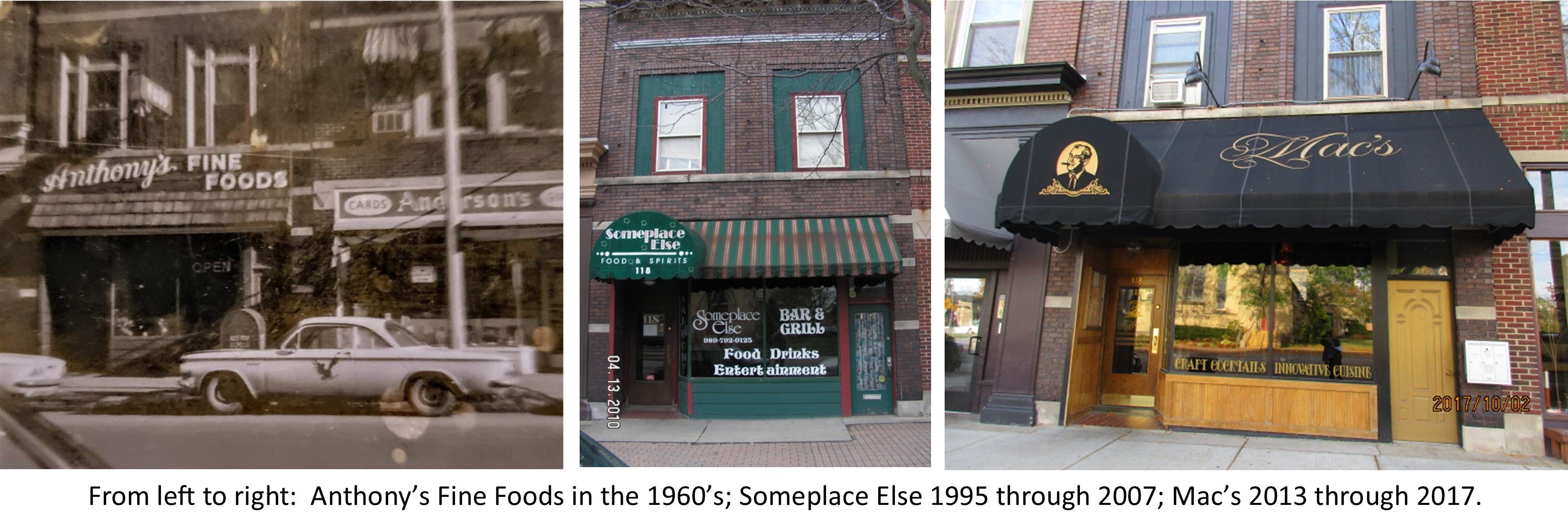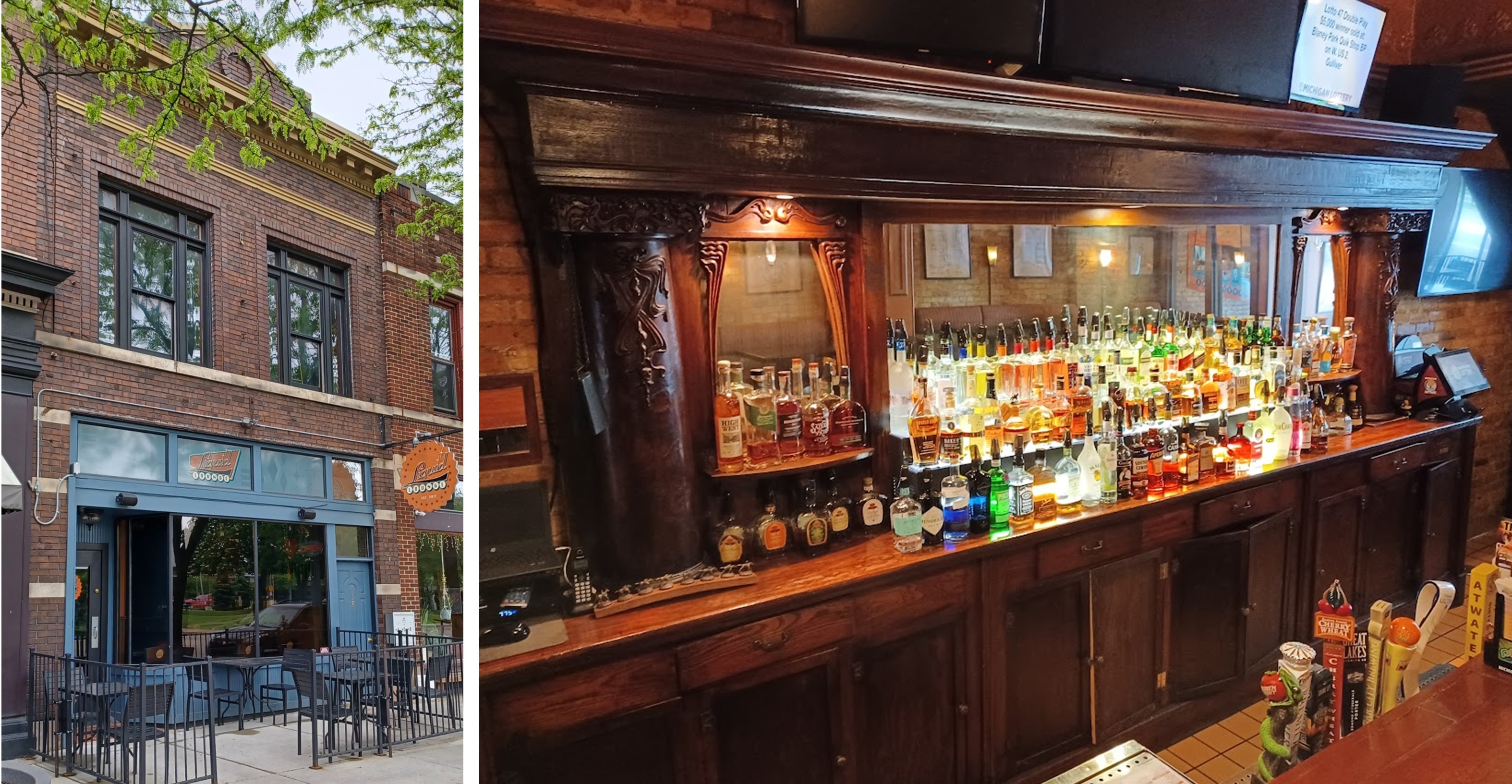
Ralph Izzo rose early each morning, walked downstairs and readied his fruit shop for the day. If he thought about it all, he might have been proud of how far he’d come.
Born Raffaele Izzo in the small Italian village of San Potito Sannitico (about 40 miles north of Naples), he left home in 1888 at the age of 23 and made his way to Saginaw where he joined and worked with his brother who owned a grocery at 512 W. Washington.
Soon, he opened his own fruit business at the corner of S. Michigan and Mackinaw but in 1914, he built a brand new building at 118 N. Michigan Avenue where he not only ran the store but lived with his wife above it. Indeed, he had come a long way and succeeded in becoming a successful entrepreneur in Saginaw.
Ralph operated his fruit store until his death in 1925. And he may have supplemented the fruit business by operating a speakeasy, according to long time Saginaw residents. Though no hard evidence exists, it makes for a good story and is certainly possible. After all, Michigan passed the first prohibition law in 1917, three years before the nationwide ban, and speakeasys popped up everywhere.
One thing is certain: today, the bar inside the building has a definite connection to Prohibition’s notorious gangs. But more about that to come.
THROUGH THE YEARS
Mary Izzo continued to operate the shop until about 1933. Various bakeries followed and then, for many years, Tony Furlo owned and operated Anthony’s Fine Foods.
The building was then sold to various buyers who leased the building. One of the tenants was Saginaw resident and artist Veronica Lazorchak who, for several years, operated an art and frame gallery. Veronica then purchased the building in 1994.
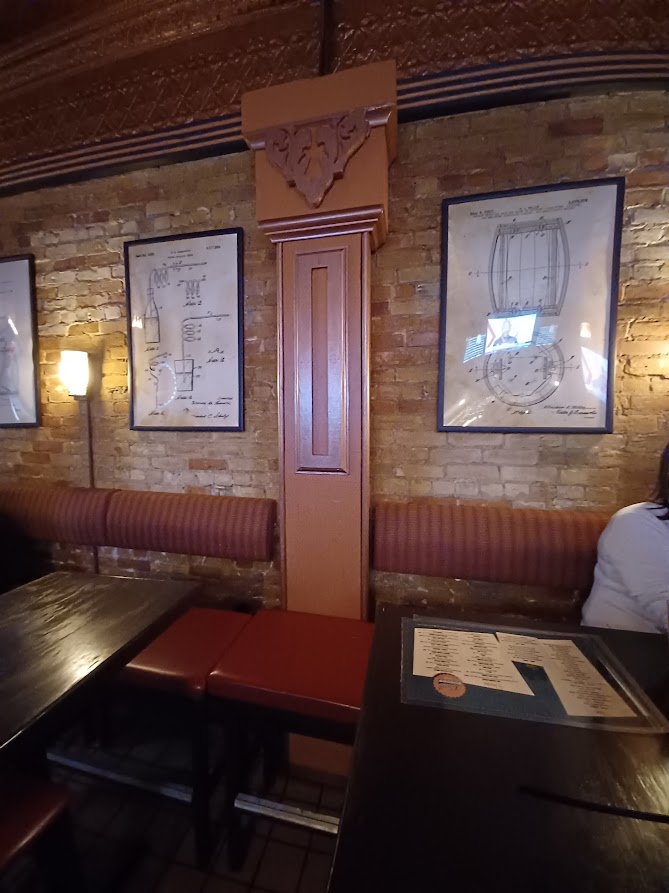 Shortly thereafter, a leak in one of the upstairs apartments damaged walls, ceilings and most of her inventory. Restoration exposed the original brick walls and tin ceilings that we see today, and Veronica even found notes – in French – left behind by the workers who built the building saying, “We were here.” She also installed a column (pictured at right) rescued from the historic Pioneer Club which had been in the Fordney Hotel until a fire tragically destroyed it in 1991.
Shortly thereafter, a leak in one of the upstairs apartments damaged walls, ceilings and most of her inventory. Restoration exposed the original brick walls and tin ceilings that we see today, and Veronica even found notes – in French – left behind by the workers who built the building saying, “We were here.” She also installed a column (pictured at right) rescued from the historic Pioneer Club which had been in the Fordney Hotel until a fire tragically destroyed it in 1991.
Rather than reopening the gallery, Veronica and her parents, George and Noreen Poineau, opened Someplace Else, a bar and restaurant that was an instant success. After several good years, she closed Someplace Else, sold the building in 2007, and returned to her artistic endeavors.
Within two years, the new owners lost it to foreclosure. In 2013, Mac’s bought and opened in the building and then moved to 207 N. Hamilton Street.
We bought the building in 2018. Front windows were replaced in their original openings, a new roof was installed, updates were made to the two second floor apartments and to the various building systems, and – on the first floor - Liquid Lounge opened, complete with the bar where gangsters once met.
THE NOTORIOUS BAR
While converting the building from art gallery to Someplace Else, Veronica found and installed an iconic “Brunswick bar,” one of the few originals still in existence. And it's in excellent condition. Veronica's only modification was extending the right side to fit the space (made by a very good craftsman!) and adding the railings. To our knowledge, no other modifications have been made.
Brunswick bars were built by Brunswick-Balke-Collender, a company formed in 1884 by the merger of three companies which dominated the market in billiard table production. Since most billiard tables were sold to taverns, it was only natural that the company expand its product line to include back and front bars which they manufactured in Iowa. The newly formed company soon captured 95% of the market.
A Brunswick-Balke-Collender catalog published in the late 1880’s showed 25 styles of bars, and the bar in the building today is easily recognizable as the Longwood model. Though it no longer has the top bracket, it may never have had one since the bars were fully customizable and built to order.
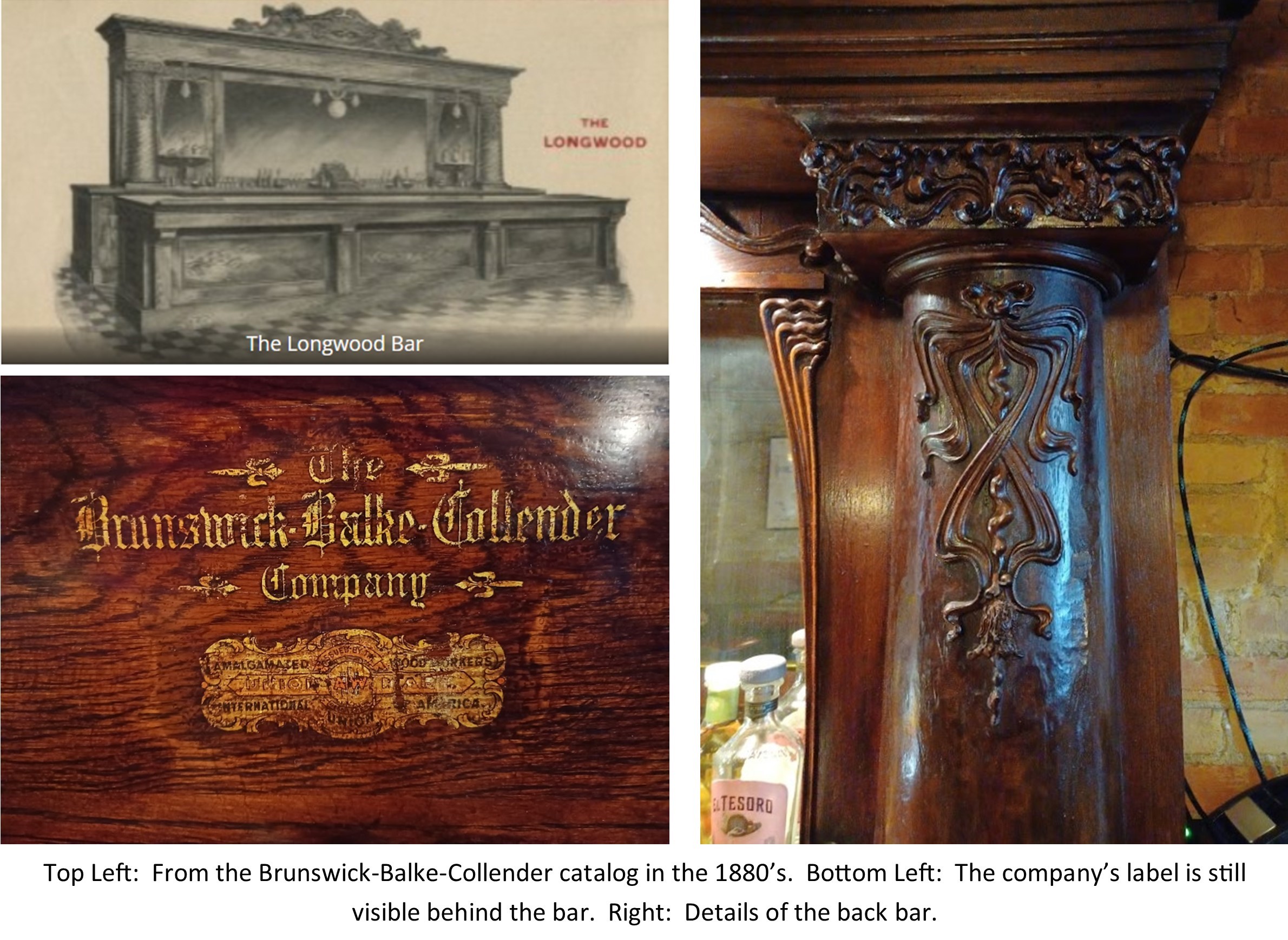
No one knows who ordered it but it’s not just any bar and it has quite a history! Sometime during the 1920’s, Detroiter Mike Gelfand built a dance hall in Lupton, Michigan and named it the Graceland Ballroom after his wife Grace. And there, he installed the very bar that Veronica installed in the building.
Gelfand was in the infamous Purple Gang’s “navy,” bootleggers who specialized in moving alcohol across the Detroit River. For several years, the gang supplied Canadian whiskey to Al Capone’s Chicago organization.
During the 1920’s and into the ‘30’s, the Purple Gang reigned supreme in the Detroit underworld, controlling the city’s vice, gambling, liquor and drug trade. Today, the Purples and other Prohibition gangsters have become legendary but they were, in fact, notoriously violent criminals who stole, extorted and murdered to get their way.
It’s no wonder the Purples needed an escape when John Law got close, and the oh-so-remote Graceland, complete with underground tunnels, was perfect. And there, they consumed plenty of bootleg whiskey at the bar. Sometimes Al Capone joined them when they met to conduct business.
But even at Graceland, violence followed. One evening, gunfire erupted and a bullet lodged in the top of the back bar, having purportedly gone through the skull of one of the gang members.
Graceland burned to the ground in 1981. By then, the bar had been removed and it was Veronica’s good fortune to find it. The bullet was gone but the hole it had made was still visible and was a great conversation piece in the days of Someplace Else, Veronica told me.
The next owners, however, attempted to fill in the hole, but Veronica knew exactly where it was and recently pointed it out to me. And if you look hard enough, it’s still visible, thanks to an amateur patch job!
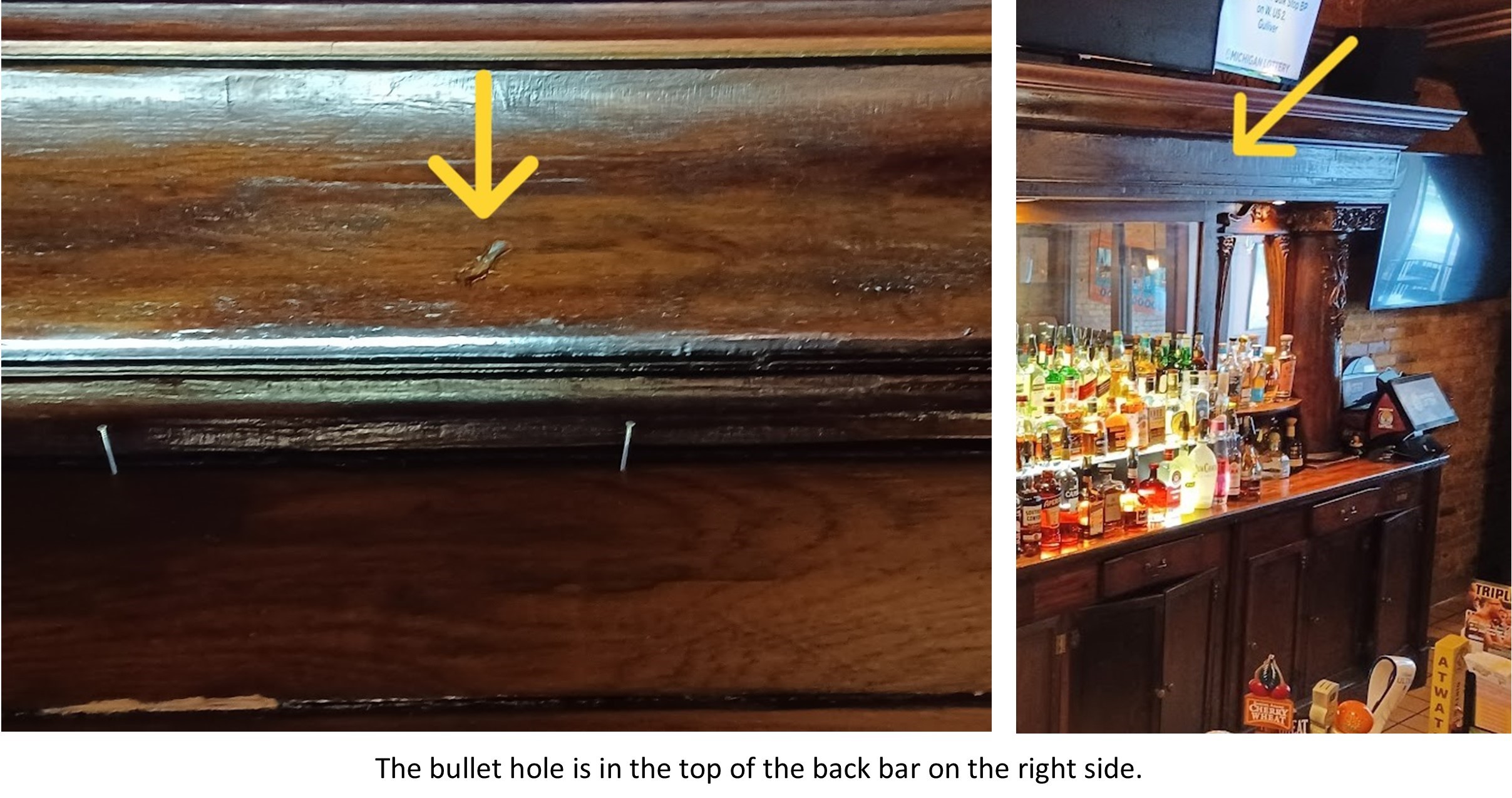
Many thanks to Veronica Lazorchak for filling me in on the history of the bar and the building!
- Betsy de Parry, VP, Sales and Marketing

